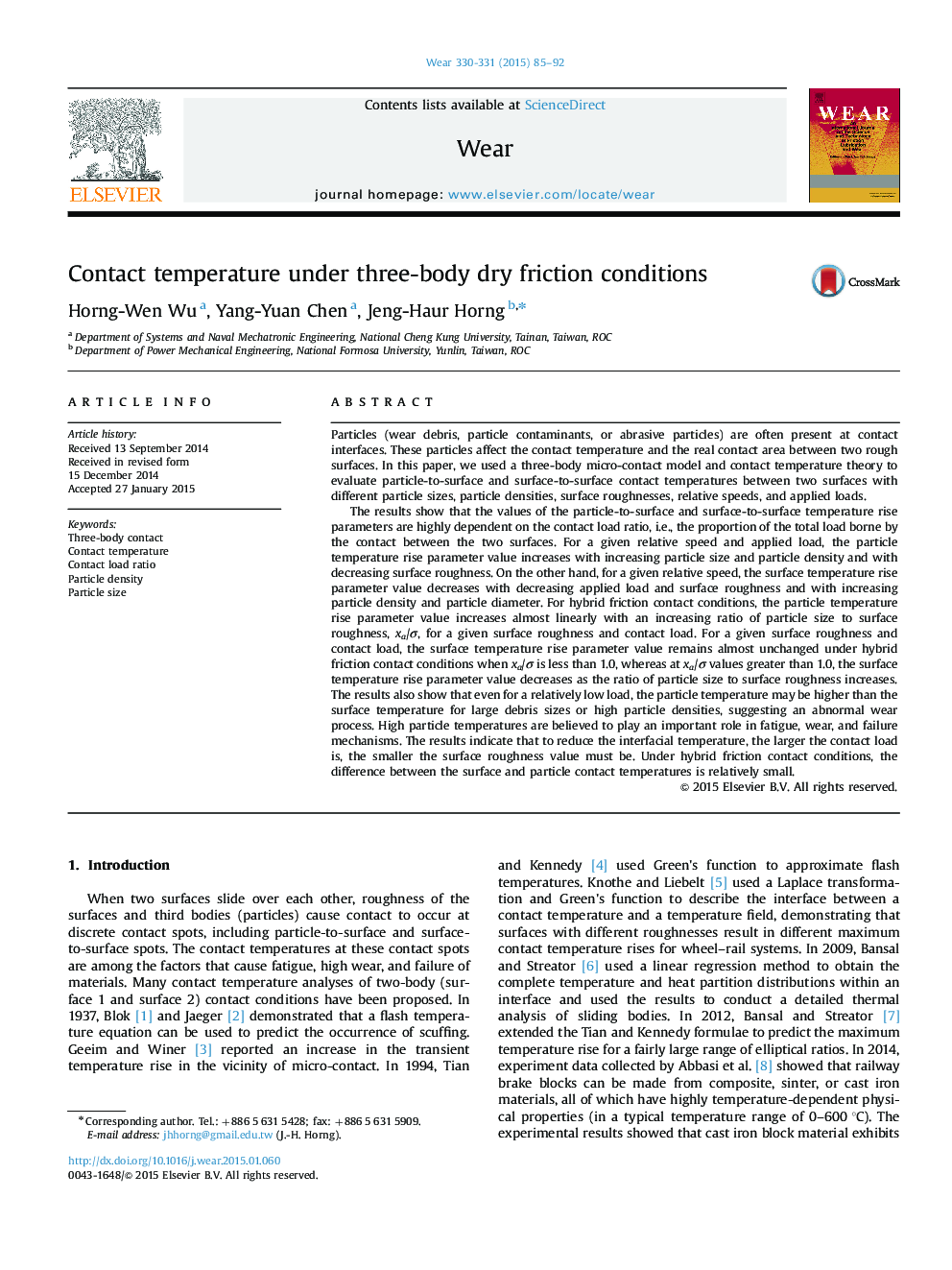| Article ID | Journal | Published Year | Pages | File Type |
|---|---|---|---|---|
| 7004283 | Wear | 2015 | 8 Pages |
Abstract
The results show that the values of the particle-to-surface and surface-to-surface temperature rise parameters are highly dependent on the contact load ratio, i.e., the proportion of the total load borne by the contact between the two surfaces. For a given relative speed and applied load, the particle temperature rise parameter value increases with increasing particle size and particle density and with decreasing surface roughness. On the other hand, for a given relative speed, the surface temperature rise parameter value decreases with decreasing applied load and surface roughness and with increasing particle density and particle diameter. For hybrid friction contact conditions, the particle temperature rise parameter value increases almost linearly with an increasing ratio of particle size to surface roughness, xa/Ï, for a given surface roughness and contact load. For a given surface roughness and contact load, the surface temperature rise parameter value remains almost unchanged under hybrid friction contact conditions when xa/Ï is less than 1.0, whereas at xa/Ï values greater than 1.0, the surface temperature rise parameter value decreases as the ratio of particle size to surface roughness increases. The results also show that even for a relatively low load, the particle temperature may be higher than the surface temperature for large debris sizes or high particle densities, suggesting an abnormal wear process. High particle temperatures are believed to play an important role in fatigue, wear, and failure mechanisms. The results indicate that to reduce the interfacial temperature, the larger the contact load is, the smaller the surface roughness value must be. Under hybrid friction contact conditions, the difference between the surface and particle contact temperatures is relatively small.
Related Topics
Physical Sciences and Engineering
Chemical Engineering
Colloid and Surface Chemistry
Authors
Horng-Wen Wu, Yang-Yuan Chen, Jeng-Haur Horng,
